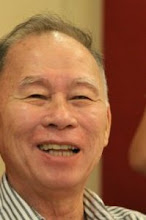Wikipedia, the free encyclopedia,
describes the Philippines:
“The Philippines (
i/ˈfɪlɨpiːnz/; fi-lə-peenz; Filipino: Pilipínas [ˌpɪlɪˈpinɐs]), officially known as the Republic of the
Philippines (Filipino: Repúblika ng Pilipinás), is a sovereign state in Southeast
Asia in the western Pacific Ocean. To its north
across the Luzon Strait lies Taiwan. West across the South
China Sea sits Vietnam. The Sulu Sea to the southwest lies between the country and the island of Borneo, and to the south the Celebes Sea separates it from other islands of Indonesia. It is bounded on the east by the Philippine
Sea. Its location on the Pacific
Ring of Fire and its tropical climate make the Philippines
prone to earthquakes and typhoons but have also endowed the country with
natural resources and made it a megadiverse country.
Covering almost three hundred thousand square kilometers (over
115,000 sq mi) makes it the 73rd largest independent nation[12] and an archipelago comprising 7,107 islands, the Philippines is
categorized broadly into three main geographical divisions: Luzon, Visayas, and Mindanao. Its capital city is Manila.
With a population of more than 97 million people[6], the Philippines is the seventh most populated Asian country and the 12th
most populated country in the world. An additional 12 million Filipinos live overseas.[13]Multiple ethnicities and cultures are found throughout the islands. In prehistoric
times, Negritos were some of the archipelago's earliest
inhabitants. They were followed by successive waves of Austronesian peoples who brought with them influences from Malay, Hindu, and Islamic societies. Thus, establishing various nations
either ruled by Datus, Rajahs, Sultans or Lakans. Trade and subsequent Chinese settlement
also introduced Chinese
cultural elements which remain to this day.
The arrival of Ferdinand
Magellan in 1521 marked the beginning of an era of
Spanish interest and eventual colonization. In 1543, Spanish explorer Ruy López de Villalobos named the archipelago Las Islas Filipinas in honor of Philip
II of Spain. The Spanish
Empire began to settle with the arrival of Miguel
López de Legazpi fromNew Spain (present day-Mexico) in 1565 who established the first Spanish
settlement in the archipelago, which remained a Spanish colony for more than 300 years. During this time, Manila became the Asian
hub of the Manila–Acapulco
galleon fleet.
As the 19th century gave way to the 20th,
there followed in quick succession the Philippine
Revolution, which spawned the short-lived First
Philippine Republic; the Spanish–American
War; and the Philippine–American
War. In the aftermath, the United States emerged as
the dominant power; aside from the period of Japanese occupation, the United States retained sovereignty over the islands. After
World War II,[14] the Treaty
of Manila established the Philippine Republic as an
independent nation.[15] Since then, the Philippines has had an often tumultuous experience
with democracy, with popular "people
power" movements overthrowing a dictatorship in one instance but also
underlining the institutional weaknesses of its constitutional
republic in others.”
It appears that the country fell into the quagmire we are
in now, after we found ourselves free from foreign domination – regrettably,
during the realm of the Post-War Cohort Era of the Veterans Generation, my
generation. Deeply rooted feudalism took over. The
whole system of public administration followed the prevailing form of land
tenure, and public office became,
like land, a heritable interest (something that is inherited by family members,
circle of friends, or any designated successor of choice). In this way, public office
became vested in perpetuity in a man and his heirs. Every vassal was left to
provide for his own tribe. The nation and its serfs were forgotten.
Feudalism which was brought and
implanted in our people by our European colonizers is very much alive even
today. It has been rooted in our social behavior and practices, and has
undermined every democratic institution that is sought to be established in
Philippine society. It is the real cause of futility of all our efforts to
develop, grow and sustain whatever gains made as a society and a free nation.
It
should therefore be the task and sworn duty of our new political leaders TO
ELIMINATE FEUDALISM EVEN AMONG THEIR RANKS – THE SINGULAR AND GREATEST
STUMBLING BLOCK TO OUR DEVELOPMENT AS A FREE
AND PROUD NATION. Otherwise, we continue to be
branded a “country of slaves” by our neighbors – an apt tag while there is an
overwhelming dominance of the very small feudal minority over the very great
majority of “slaves”.
What the country sorely lacks is unified nationalism.
Despite his overwhelming approval rating, P-Noy critics incessantly still try
to nitpick, magnifying weaknesses of the present administration. What P-Noy can
do is to organize a movement patterned after Kapisanan ng Paglilingkod sa Bagong Pilipinas (Organization in the Service of the New Philippines), or KALIBAPI, a Filipino political
party that served as the sole
party of state during the Japanese occupation under Director-General Benigno S. Aquino. It was intended to rally Filipinos to have a united stand against Western influence. We need
a similar organization to face the bullies around us - short of employing the dreaded KEMPEITAI tactics – to cut
them down to size!




Sangkusing invites freedom-loving Pinoys to rally around the theme expressed here. We invite readers to feel free to express their feelings on this very serious issue. Thanks in advance!
ReplyDelete